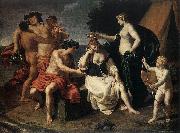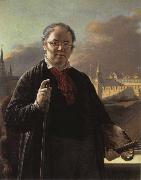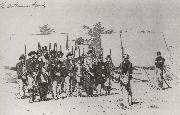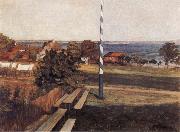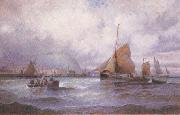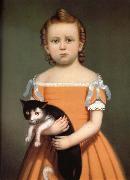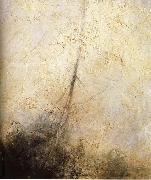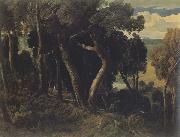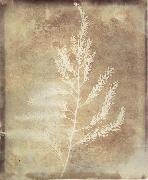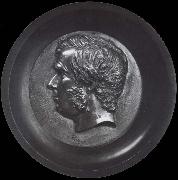|
|
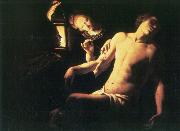 |
Trophime Bigot
|
|
Trophime Bigot (1579-1649/50), also known as Theophile Bigot, Teofili Trufemondi, Candlelight Master, Maître e la Chandelle, was a French painter of the Baroque era, active in Rome and his native Provence.
Bigot was born in Arles in 1579, where he began his artistic career. Between 1620 and 1634, Bigot was in Italy, including Rome. He is known to have been in Arles in 1634, where he painted the altarpiece Saint Laurent condamne au supplice (Saint Laurence Condemned to Torture) and Assomption de la Vierge (Assumption of the Virgin) for local churches.
Between 1638 and 1642, he lived in Aix-en-Provence, where he painted another Assumption of the Virgin. He returned to Arles in 1642, and divided his activities between this city and Avignon, where he died around 1650. |
|
|
|
|
|
 |
Tytus Czyzewski
|
|
(1880-1945) was a Polish painter, art theoretician, Futurist poet, playwright, member of the Polish Formists, and Colorist.
In 1902 he studied at the Academy of Fine Arts in Krakow in the painting studios of J??zef Mehoffer and Leon Wycz??łkowski. Czyżewski travelled to Paris and learned from the artistic trends there. He began exhibiting in 1906. Czyżewski painting style was highly influenced by Cezanne and El Greco, whose work he admired until his death.
In 1917, with the brothers Zbigniew Pronaszko and Andrzej Pronaszko, he organized in Krak??w an exhibition of Polish Expressionist works. The group later became known as the Polish Formists. Until the break-up of the Formists in 1922, he was the primary artist and theoretician behind the movement as well as the joint editor of the periodical Formiści. |
|
|
|
|
|
|
|
|
|
|
|
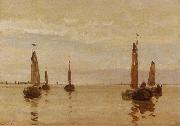 |
Willem Bastiaan Tholen
|
|
was a Dutch painter, draftsman and printmaker, born in Amsterdam, 13 Feb 1860, died in The Hague, 5 Dec 1931. He came from an artistic family, who lived in Kampen from 1864. There he developed at an early age a lasting love of the Zuiderzee. In Kampen he became friendly with the young Jan Voerman; they entered the Amsterdam academy together in 1876, where Tholen studied under August Allebe. Subsequently he learned technical drawing at the Polytechnische School in Delft until 1878. Thereafter he spent three months in the studio of Paul Gabriël in Brussels, from whom he received his first real instruction in painting. In the following years Gabriël's advice was of particular importance for Tholen, as they worked together en plein air for many summers near Kampen and Giethoorn, among other places. In Gouda (1878-9) and Kampen (1880-85) he taught draftsmanship in order to support himself but after 1885 concentrated entirely on his own work. From 1887 he lived in The Hague, where he became friendly with the painters of The Hague school. He took an active part in the artistic life of The Hague and was a member of the Pulchri Studio.
|
|
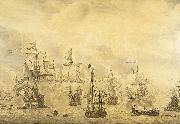 |
Willem van de Velde the Elder
|
|
(c. 1611 - 13 December 1693) was a Dutch Golden Age seascape painter.
Willem van de Velde, known as the Elder, a marine draughtsman and painter, was born in Leiden, the son of a Flemish skipper, Willem Willemsz. van de Velde, and is commonly said to have been bred to the sea. In 1706 Bainbrigg Buckeridge noted that he eunderstood navigation very welle. He married Judith Adriaensdochter van Leeuwen in Leiden, the Netherlands, in 1631.
His three known legitimate children were named Magdalena, born 1632; Willem, known as the Younger, also a marine painter, born 1633; and Adriaen, a landscape painter, born 1636.
His marriage was stormy, at least in its later years. David Cordingly relates that Willem the Elder fathered two children out of wedlock in 1653, one eby his maidservant, and the other by her friend. Nine years later the Elder and his wife went through a legal separation, eon account of legal disputes and the most violent quarrelse. The immediate cause of the dispute was his affair with a married woman.e Michael S. Robinson noted that eon 17/27 July 1662, he and his wife agreed to part. A condition of the separation was that the Elder could recover from his son Adriaen etwo royal giftse, presumably gifts from Charles II for work done in England.e Cordinglyes account further relates that the dispute was still continuing after another ten years, since ein the autumn of 1672 Judith complained to the womanes husband.e Robinson adds that by 1674 the couple emust have been reconcilede, for at a chance meeting with Pieter Blaeu in Amsterdam in July the Elder explained that he was only visiting for a few days ein order to fetch his wifee. His son, Adriaen, had died in Amsterdam in 1672, and Willem the Elder was also fetching his grandson, similarly named Adriaen, who was then aged two.
After his move to England, the exact date of which is uncertain, but reportedly at the end of 1672 or beginning of 1673, he is said to have lived with his family in East Lane, Greenwich, and to have used the Queenes House, now part of the National Maritime Museum in Greenwich, as a studio. Following the accession of William and Mary as King and Queen of England, it appears that this facility was no longer provided, and by 1691 he was living in Sackville Street, now close to Piccadilly Circus. He died in London, and was buried in St Jameses Church, at the south end of the street.
|
|
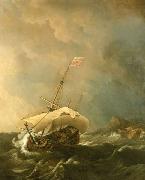 |
Willem Van de Velde The Younger
|
|
(bapt. 18 December 1633 - 6 April 1707) was a Dutch marine painter.
Willem van de Velde was baptised on 18 December 1633 in Leiden, Holland, Dutch Republic.
A son of Willem van de Velde the Elder, also a painter of sea-pieces, Willem van de Velde, the younger, was instructed by his father, and afterwards by Simon de Vlieger, a marine painter of repute at the time, and had achieved great celebrity by his art before he came to London. In 1673 he moved to England, where he was engaged by Charles II, at a salary of £100, to aid his father in "taking and making draughts of sea-fights", his part of the work being to reproduce in color the drawings of the elder van de Velde. He was also patronized by the Duke of York and by various members of the nobility.
He died on 6 April 1707 in London, England. |
|
|
|
|
|
|
|
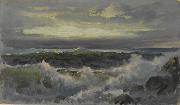 |
William Trost Richards
|
|
(June 3, 1833 - April 17, 1905) was an American landscape artist associated with both the Hudson River School and the American Pre-Raphaelite movement.
William Trost Richards was born on 3 June 1833 in Philadelphia. In 1846 and 1847 he attended the local Central High School. Between 1850 and 1855 he studied part-time with the German artist Paul Weber while working as designer and illustrator of ornamental metalwork. Richards first public showing was part of an exhibition in New Bedford, Massachusetts, organized by artist Albert Bierstadt in 1858. In 1862 he was elected honorary member of the National Academy of Design and Academician in 1871. In 1863, he became a member of the Association of the Advanced of Truth in Art, an American Pre-Raphaelite group. In 1866, he departed for Europe for one year. Upon his return and for the following six years he spent the summers on the East Coast. In the 1870s, he produced many acclaimed watercolor views of the White Mountains, several of which are now in the collection of the Metropolitan Museum of Art. Richards exhibited at the National Academy of Design from 1861 to 1899 and at the Brooklyn Art Association from 1863 to 1885. He was elected a full member of the National Academy in 1871.
Richards rejected the romanticized and stylized approach of other Hudson River painters and instead insisted on meticulous factual renderings. His views of the White Mountains are almost photographic in their realism. In later years, Richards painted almost exclusively marine watercolors.
His works are featured today in many important American museums, including the National Gallery, the Smithsonian American Art Museum, the Wadsworth Atheneum, the Philadelphia Museum of Art, the Yale University Art Gallery, the High Museum of Art, the Museum of Fine Arts, Boston, the Fogg Art Museum, the Brooklyn Museum of Art and the Thyssen-Bornemisza Museum.
|
|
|
|
|
|
|
|
|
|
|
|
|
|
|









